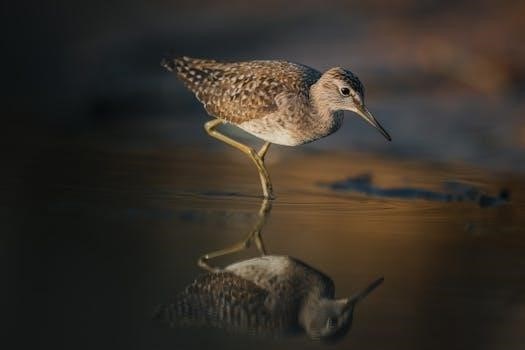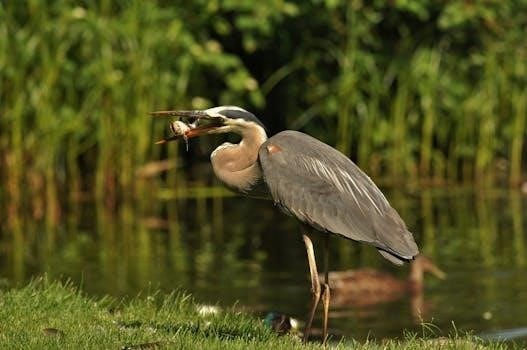
how much to tip a hunting guide
Tipping a Hunting Guide⁚ A Comprehensive Guide
Navigating the custom of tipping a hunting guide can be perplexing. This guide offers insights, drawing from various online discussions. Consider this your starting point for understanding proper etiquette and ensuring a positive experience on your guided hunt.
Understanding the Custom of Tipping Hunting Guides
The practice of tipping hunting guides stems from a blend of appreciation and industry norms. It acknowledges their efforts in making the hunt successful and enjoyable. Often, guides spend considerable time preparing, unseen, for your hunt. Tipping serves as direct recognition of their hard work. It’s akin to tipping in the service industry, where gratuity supplements their income.

However, tipping isn’t always straightforward. It’s influenced by factors such as the guide’s dedication, hunt success, and overall service quality. Some outfitters might include gratuity in the total cost, though this isn’t common. Understanding the custom helps hunters navigate the process with confidence, ensuring fair compensation for the guide’s services.
Moreover, it fosters a positive relationship between hunters and guides, promoting mutual respect.
Typical Tipping Percentages for Hunting Guides
When considering a tip for your hunting guide, a general guideline is to allocate 10-15% of the total hunt cost. This serves as a standard benchmark within the industry. For exceptional service, exceeding this range, perhaps up to 20%, is appropriate. Conversely, if the service is deemed average, adhering to the lower end of the spectrum is acceptable.
For instance, on a hunt valued at $5,000, a tip between $500 and $750 aligns with typical percentages. It’s important to note that these are merely suggestions, and individual circumstances may warrant adjustments. Factors like the guide’s effort, dedication, and the overall success of the hunt can influence the final amount.
Ultimately, the tip should reflect the hunter’s satisfaction with the guide’s contribution.
Factors Influencing the Tip Amount
Determining the appropriate tip amount for a hunting guide involves considering several key factors. While standard percentages offer a baseline, individual circumstances often necessitate adjustments. The quality of service provided stands as a primary determinant, encompassing the guide’s expertise, attentiveness, and overall professionalism.
The success of the hunt, though not solely attributable to the guide, also plays a role. A fruitful expedition may warrant a more generous tip, reflecting appreciation for the guide’s role in achieving a successful outcome. Conversely, factors beyond the guide’s control, such as weather conditions or game availability, should be taken into account.
The guide’s effort and dedication are crucial considerations. A guide who goes above and beyond, demonstrating commitment to ensuring a positive experience, deserves recognition through a more substantial tip.
Quality of Service Provided
The caliber of service rendered by your hunting guide is a paramount factor in determining an appropriate tip. Consider aspects like the guide’s knowledge of the hunting area, their ability to locate game, and their expertise in hunting techniques. A guide who demonstrates proficiency in these areas contributes significantly to a successful and enjoyable hunt.
Furthermore, assess the guide’s attentiveness to your needs and safety. A guide who prioritizes your well-being, provides clear instructions, and ensures a comfortable hunting environment deserves higher recognition. Their communication skills, patience, and willingness to adapt to your skill level also reflect the quality of service.
Ultimately, the tip should reflect your satisfaction with the overall experience facilitated by the guide’s expertise and dedication. A truly exceptional guide enhances the hunt beyond mere game retrieval.
Success of the Hunt
The success of the hunt, often measured by the game harvested, undeniably influences tipping considerations. While a successful hunt may prompt a more generous tip, it’s essential to remember that numerous factors beyond the guide’s control contribute to the outcome. Weather conditions, game availability, and even the hunter’s skill all play a role.
Therefore, avoid solely basing the tip on whether you bagged a trophy. Instead, assess the guide’s efforts in maximizing your opportunities. Did they work diligently to locate game, provide sound advice, and create a positive hunting experience, regardless of the final result? A guide’s commitment and expertise deserve recognition, even if the hunt doesn’t yield the desired outcome.
Consider the overall experience and the guide’s dedication when determining the tip amount, ensuring it fairly reflects their contribution to your hunt, irrespective of the harvest.
Guide’s Effort and Dedication
A hunting guide’s effort and dedication significantly impact the overall hunting experience and should heavily influence your tipping decision. Consider the guide’s commitment to ensuring your safety, comfort, and enjoyment throughout the hunt. Did they go above and beyond to cater to your needs and preferences?
Evaluate their knowledge of the hunting area, their expertise in tracking game, and their willingness to share their knowledge with you. A dedicated guide will invest time in scouting locations, setting up blinds, and providing valuable insights into animal behavior. They’ll patiently answer your questions, offer guidance on shooting techniques, and adapt their approach to match your skill level.
Moreover, assess their attitude and enthusiasm. A passionate and dedicated guide will create a positive and memorable hunting experience, even in challenging conditions. Their hard work and commitment deserve to be acknowledged with a generous tip, reflecting your appreciation for their exceptional service.
When Tipping May Not Be Necessary

While tipping hunting guides is customary, there are instances where it may not be necessary or appropriate. If the outfitter includes a gratuity in the total cost of the hunt, additional tipping may not be required, but clarifying this beforehand is crucial.
Poor service is another factor. Should your guide demonstrate negligence, lack of effort, or unprofessional behavior, reducing or withholding a tip might be justified. Instances of safety violations, disregard for your needs, or blatant disregard for hunting regulations warrant careful consideration before offering a tip.
Consider also situations where the hunt was significantly misrepresented. If the hunting area or game numbers were not as advertised, and the guide did little to mitigate the situation, a tip might be unwarranted. However, if the guide exerted considerable effort despite the circumstances, a smaller token of appreciation could still be appropriate.
How to Handle Unsatisfactory Hunts
Dealing with an unsatisfactory hunt can be frustrating. Begin by calmly discussing your concerns with the outfitter or guide. Explain the specific issues you encountered, whether it was poor service, misrepresentation of the hunting area, or lack of effort.
Maintain a respectful tone while expressing your dissatisfaction. This allows for a more productive conversation and potential resolution. The outfitter may offer a partial refund, a discount on a future hunt, or other forms of compensation to address your concerns.
If direct communication doesn’t resolve the issue, consider documenting your experience. Gather evidence such as photos, videos, or written statements to support your claims. Sharing your experience online through reviews can also inform other hunters.
Remember, withholding a tip is an option, but communicating your reasons is crucial for the outfitter to improve their services. If all else fails, seeking advice from hunting organizations or consumer protection agencies may be helpful.
Tipping Other Staff Members
While the hunting guide receives primary focus, recognizing the contributions of other staff is essential. Cooks, camp jacks, and wranglers often play vital roles in ensuring a successful and enjoyable hunt. Consider tipping these individuals based on the quality of their service.
For cooks, a tip acknowledges their efforts in providing meals. Camp jacks who maintain the camp and assist with various tasks also deserve recognition. Wranglers who care for horses or other animals contribute significantly to the hunting experience.
The amount to tip these staff members can vary. A common practice is to allocate a percentage of the total tip pool to be shared among them. Alternatively, you can tip individuals directly based on their specific contributions.

Communicate with the outfitter or guide to understand how tips are typically distributed among the staff. This ensures that your gratuity reaches those who have contributed to your hunt’s success. Remember, any token of appreciation is generally well received!
Cash vs. Other Forms of Payment
When it comes to tipping a hunting guide, cash is generally the preferred and most practical method. Cash provides immediate and direct compensation, ensuring the guide receives the full amount without deductions or processing fees. This allows the guide to use the tip as needed, whether for personal expenses or to share with other staff members.
While other forms of payment, such as checks or electronic transfers, may seem convenient, they can present challenges. Checks may require time to clear and can incur bank fees, especially if the guide is located in a different region or country. Electronic transfers might also involve transaction fees or currency exchange costs, reducing the overall tip amount.
Furthermore, cash offers a level of discretion and avoids potential tax implications for the guide. Confirm with the outfitter if alternative payment methods are acceptable. If so, consider covering any associated fees to ensure the guide receives the intended tip amount. However, cash remains the most straightforward and appreciated option.
Cultural and Regional Tipping Variations
Tipping customs can differ significantly across cultures and regions, influencing expectations for hunting guides. In North America, tipping service providers is common, with 10-20% considered standard for hunting guides. However, in some European countries, tipping may be less prevalent, and guides might not expect additional gratuity.
Regional variations within a country can also exist. Hunts in remote areas with higher operational costs may warrant slightly higher tips. The type of game and the hunt’s overall price can also influence tipping norms. Before your hunt, research the local customs and etiquette. Consult with the outfitter for guidance.
Understanding these cultural and regional differences is crucial. It ensures you show appropriate appreciation. It also avoids misunderstandings or unintentionally offending your guide. Always be respectful and adaptable to local practices. Adapting to local customs will foster a positive relationship with your guide.
Communicating with the Outfitter About Tipping
Open communication with the outfitter is essential for clarifying tipping expectations. Before your hunt, inquire about their specific policies or suggested gratuity amounts for guides and other staff. Some outfitters might include a service charge in the total cost. However, this is uncommon, so confirm if this covers tips.
Asking the outfitter directly eliminates ambiguity. It helps you plan your budget accordingly. They can provide insights into regional norms. The outfitter can inform you about how tips are distributed among the team. If you have any concerns about the service quality, address them with the outfitter privately.

Honest feedback allows them to improve their services. It also ensures fair compensation for the staff. Clear communication promotes transparency. This contributes to a positive relationship between hunters, guides, and outfitters. It sets the stage for a successful and enjoyable hunting experience for everyone involved.